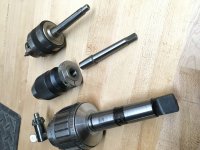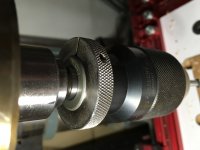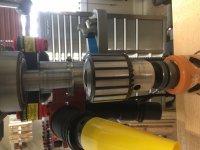I have a Ridgid 15" drill press and for the most part it is a decent product for the money and I'm happy with it. However, I do have one problem. I tried emailing Ridgid support about this and, unlike when you contact Festool, they ignored my email and never replied. I'm hoping that someone here can give me some ideas on how to solve this
The one time I have problems with the drill press is when I try to use a hole saw in it. Unlike a standard drill bit, hole saws always have some vibration. About half way through a cut with a hole saw, as I am pulling back slightly to clear sawdust from the saw cut, the chuck falls off the quill. [eek]
Any ideas on how to keep chuck from falling off the quill would be welcome.
Thanks in advance for the help
The one time I have problems with the drill press is when I try to use a hole saw in it. Unlike a standard drill bit, hole saws always have some vibration. About half way through a cut with a hole saw, as I am pulling back slightly to clear sawdust from the saw cut, the chuck falls off the quill. [eek]
Any ideas on how to keep chuck from falling off the quill would be welcome.
Thanks in advance for the help



